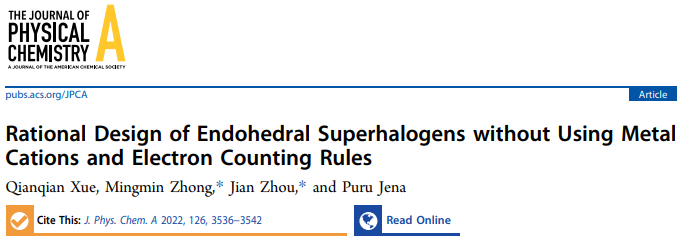
Superhalogens, predicted 40 years ago, have attracted considerable attention due to their potential as building blocks of novel materials with various applications. While a large number of superhalogen clusters have been theoretically predicted and experimentally synthesized, they either require the use of a metal cation or electron counting rules. In particular, very rare endohedral cage clusters in defiance of the above requirements have been found to be superhalogens. In this work, motivated by recent experimental advances in endohedral cage clusters, we present a rational designprinciple for creating a new class of such superhalogens. Focusing on the chemical formula of A@Si20X20 (A = F, Cl, Br, I, BH4, BF4; X = H, F, Cl, Br, I, BO, CN, SCN, CH3), we use first-principles calculations to study 54 different clusters and show that these clusters possess electron affinities as high as 8.5 eV. Some of these clusters with X = BO and CN can even be stable as dianions, with large second electron affinity ∼2 eV. Similarly, Cl@C60 is found to be a superhalogen. This class of superhalogens is different from the conventional ones with chemical formula MXk+1, where X is a halogen and M is a cation with a formal +k oxidation state. Interestingly, the electron affinities of A@Si20X20 are almost independent of the central A moiety, but are guided by the functional group X. The potential of these endohedral superhalogens as electrolytes in Li-ion batteries is discussed.
Link:https://pubs.acs.org/doi/pdf/10.1021/acs.jpca.2c02530